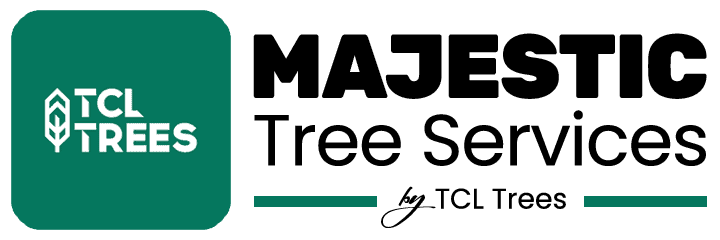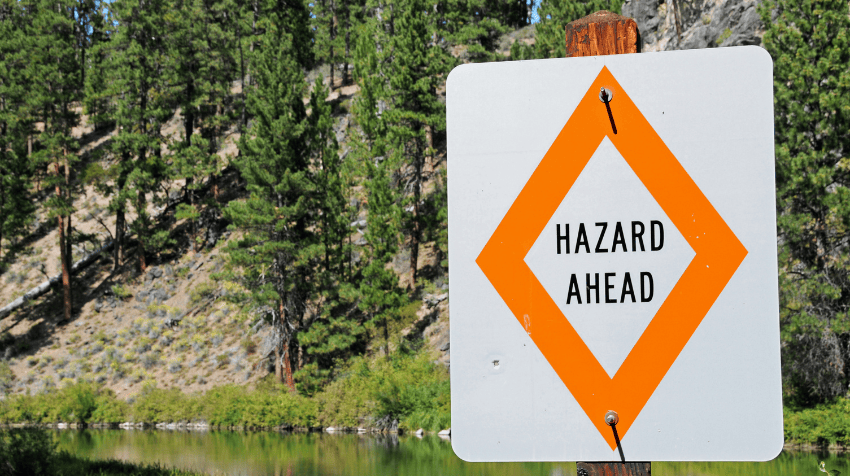Tree Hazard Assessment: Unveiling the Time Bomb in Your Yard
Have you ever considered the potential hazards of the trees on your property? Trees are often seen as beautiful and beneficial additions to any landscape, but they can also pose a significant risk if not properly maintained. That’s where tree hazard assessments come in.
A tree hazard assessment is an important step in ensuring the safety of your property and those around it. Regular assessments are crucial for identifying potential hazards before they become a danger. Factors such as disease, damage from storms or pests, and improper pruning can all contribute to a hazardous tree.
With proper assessment and maintenance, these risks can be mitigated or eliminated altogether. So, if you haven’t had your trees assessed recently, it may be time to consider scheduling one to ensure that your property remains safe for years to come.
Key Takeaways
- Hazard assessments are crucial in identifying potential hazards in trees and providing mitigation recommendations.
- Neglecting assessments can lead to severe consequences for people and property.
- Regular inspections by certified arborists detect potential hazards early on and prevent accidents.
- Mitigating tree hazards involves pruning, trimming, structural support, and bracing, and in some cases, tree removal may be necessary.
What is a Tree Hazard Assessment?
Don’t wait for a tragedy to strike – get a tree hazard assessment today and ensure the safety of your loved ones.
Tree safety should always be a top priority, especially if you have trees that are near your home or other structures.
A tree hazard assessment is a professional evaluation of the risks associated with your trees. It involves identifying hazards such as deadwood, decay, cracks in the trunk or branches, and leaning trees.
An arborist will conduct the assessment and provide recommendations on how to mitigate any identified hazards. This may include pruning, cabling or bracing, removal of hazardous limbs or even removing the entire tree.
By getting a tree hazard assessment done, you can prevent accidents before they happen and protect your property from damage caused by falling trees or branches.
So don’t delay – schedule your tree hazard assessment today!
The Importance of Regular Assessments
Regular assessments are crucial to ensure the safety of your surrounding environment. Neglecting to assess the condition of your trees can lead to potential hazards that can cause significant damage and harm in the future. Here are some benefits of regular tree hazard assessments:
- Early detection: Assessments help identify potential risks early on, allowing for preventive measures to be taken before any damage or injury occurs.
- Cost-effective: Regular assessments save money in the long run by preventing costly damages and liability claims.
- Improved property value: Keeping your trees healthy and safe increases property value and improves overall aesthetics.
- Peace of mind: Knowing that your trees are regularly assessed and maintained brings peace of mind.
On the other hand, neglecting tree hazard assessments can have a severe impact on your environment’s safety. Failing to assess trees’ health can result in decay, disease, or pest infestation going unnoticed until it’s too late. Trees with weak structures or compromised roots pose a significant risk during high winds or storms, causing damage to properties or even injuring people.
Regular tree hazard assessments provide numerous benefits, while neglecting them can have severe consequences for both individuals and their surroundings. So, ensure that you prioritize these essential evaluations to maintain a safe and aesthetically pleasing environment for yourself and those around you.

Factors That Contribute to Tree Hazards
Discovering the reasons behind tree hazards is essential to prevent potential accidents and damage. Trees can be hazardous due to various factors, such as disease or decay, structural defects, or environmental conditions.
For instance, trees that have been affected by pests or diseases may become weak and unstable. Similarly, trees with structural defects like cracks or splits are more prone to breaking and falling during strong winds or heavy rainfall.
Identifying risky trees is crucial for tree hazard prevention. Regular inspections by certified arborists can help detect potential hazards before they cause harm. Arborists examine the tree’s physical condition, including its structure, root system, and foliage health. They also consider its surrounding environment and assess any external factors that may affect its stability.
By identifying risky trees early on and taking necessary measures like pruning or removal, we can ensure the safety of people and property around them.
How to Conduct a Tree Hazard Assessment
To assess the risk of a tree, it’s essential to have a certified arborist conduct an inspection of its physical condition, surrounding environment, and any external factors that may affect its stability.
Assessment methods include visual inspections, sounding techniques, and advanced diagnostic tools such as resistographs and sonic tomography. These methods help identify defects in the tree structure such as cracks, decayed wood, or weak branches that may pose a hazard.
Professional services for tree hazard assessment are highly recommended to ensure accurate evaluations and minimize risks. Arborists can provide detailed reports with recommendations on how to mitigate hazards or remove trees if necessary.
A thorough assessment can also help property owners plan for future maintenance needs and prevent potential damage from falling trees or limbs. Remember that prevention is key when it comes to tree hazards – regular inspections by professionals can save lives and property damage in the long run.
Mitigating Tree Hazards
When it comes to mitigating tree hazards, there are several key points to consider.
First and foremost, pruning and trimming can help prevent branches from falling and causing damage. In some cases, tree removal may be necessary if the tree poses a significant risk.
Additionally, structural support and bracing can help reinforce weak or damaged trees.
Regular maintenance and monitoring can also go a long way in identifying potential hazards before they become a problem.
Pruning and Trimming
Regularly trimming and pruning your trees can help prevent branches from becoming heavy and dangerous, reducing the risk of falling limbs. The frequency of tree pruning depends on the species and age of the tree, as well as its location and condition. For example, young trees require more frequent pruning to shape their growth, while mature trees may only need occasional maintenance pruning.
When it comes to tree pruning techniques, it’s important to follow industry standards and best practices. Over-pruning or incorrect cuts can damage the tree’s health and structure. Professional arborists have the knowledge and expertise to determine which branches should be pruned for safety reasons without compromising the tree’s overall health.
Regular pruning not only reduces hazards but also promotes healthy growth and improves a tree’s aesthetic appeal. So if you want to ensure your trees are safe for years to come, consider scheduling regular professional trimming and pruning services.
Tree Removal
Removing a tree can be a difficult decision, but it may become necessary if the tree is diseased or poses a threat to nearby structures. Before deciding on removing the tree, consider exploring other alternatives such as pruning or trimming. However, if these options are not feasible, then it’s best to remove the tree entirely.
Tree removal should not be taken lightly as it has a significant environmental impact. Trees play an essential role in our ecosystem by providing oxygen and absorbing carbon dioxide. Therefore, before removing a tree, consult with an arborist who can assess its health and determine the best course of action that minimizes harm to the environment while ensuring safety for nearby structures.
Remember that preserving trees is crucial in maintaining our planet’s delicate balance and ensuring a sustainable future for generations to come.
Structural Support and Bracing
Structural support and bracing can help prevent trees from collapsing or breaking under heavy loads. These techniques are used to improve tree stability by reinforcing weak points, such as branch unions or trunk forks, that may be prone to failure.
Bracing involves installing cables or rods between branches or trunks to provide additional support and reduce the risk of structural failure. Risk management is an essential element in assessing the safety of trees on your property.
Tree hazard assessment professionals use a combination of visual inspection, advanced technology, and scientific knowledge to evaluate the risk posed by trees and recommend appropriate measures for reducing that risk. Structural support and bracing are just some of the tools available in managing tree hazards.
By working with qualified arborists who understand these techniques, homeowners can ensure their trees remain healthy and safe for years to come.

Regular Maintenance and Monitoring
Consistent upkeep and monitoring of trees by qualified professionals is crucial for ensuring their prolonged health and stability, ultimately promoting the longevity of your property’s greenery.
Tree risk management involves identifying potential hazards early on, before they become more serious issues that could cause significant damage or injury. This process includes regular inspections to evaluate tree health, as well as preventative measures such as pruning and trimming.
Regular maintenance can help prevent many common issues that affect trees, including disease, pests, and structural problems. By catching these problems early on, tree care professionals can take steps to address them before they become more severe.
Additionally, preventative measures such as pruning dead or diseased branches can help reduce the likelihood of falling limbs during storms or other extreme weather events. Overall, investing in routine maintenance and monitoring can go a long way in keeping your property safe and beautiful for years to come.
Frequently Asked Questions
What are some common signs that a tree may be hazardous?
You can identify hazardous trees by looking for signs such as cracks, decay, dead branches, or leaning. Prevention involves regular inspections and maintenance to eliminate potential dangers before they become a hazard.
Can a tree hazard assessment be performed on any type of tree?
Tree hazard assessments are crucial for any tree species, providing insight into potential dangers and allowing for proactive tree care. The process involves a thorough inspection by a certified arborist, offering benefits such as increased safety and preservation of trees.
How often should a tree hazard assessment be conducted?
To ensure safety and prevent damage, tree hazard assessments should be conducted every 1-3 years. Frequency depends on factors such as age, species, and location and is important for identifying potential risks before they occur.
Are there any legal liabilities associated with having a hazardous tree on your property?
If you have a hazardous tree on your property, there are legal ramifications and insurance coverage to consider. Liability may fall on the property owner if the tree causes damage or injury. It’s important to address hazards through regular assessments.
Can tree hazards be prevented or minimized through proper maintenance and care?
To prevent or minimize tree hazards, proper maintenance and preventive measures are crucial. Regular inspections, pruning, and removal of dead branches can ensure the safety of your property and those around you.
Related Source
The Importance of a Tree Risk Assessment by a Certified Arborist

